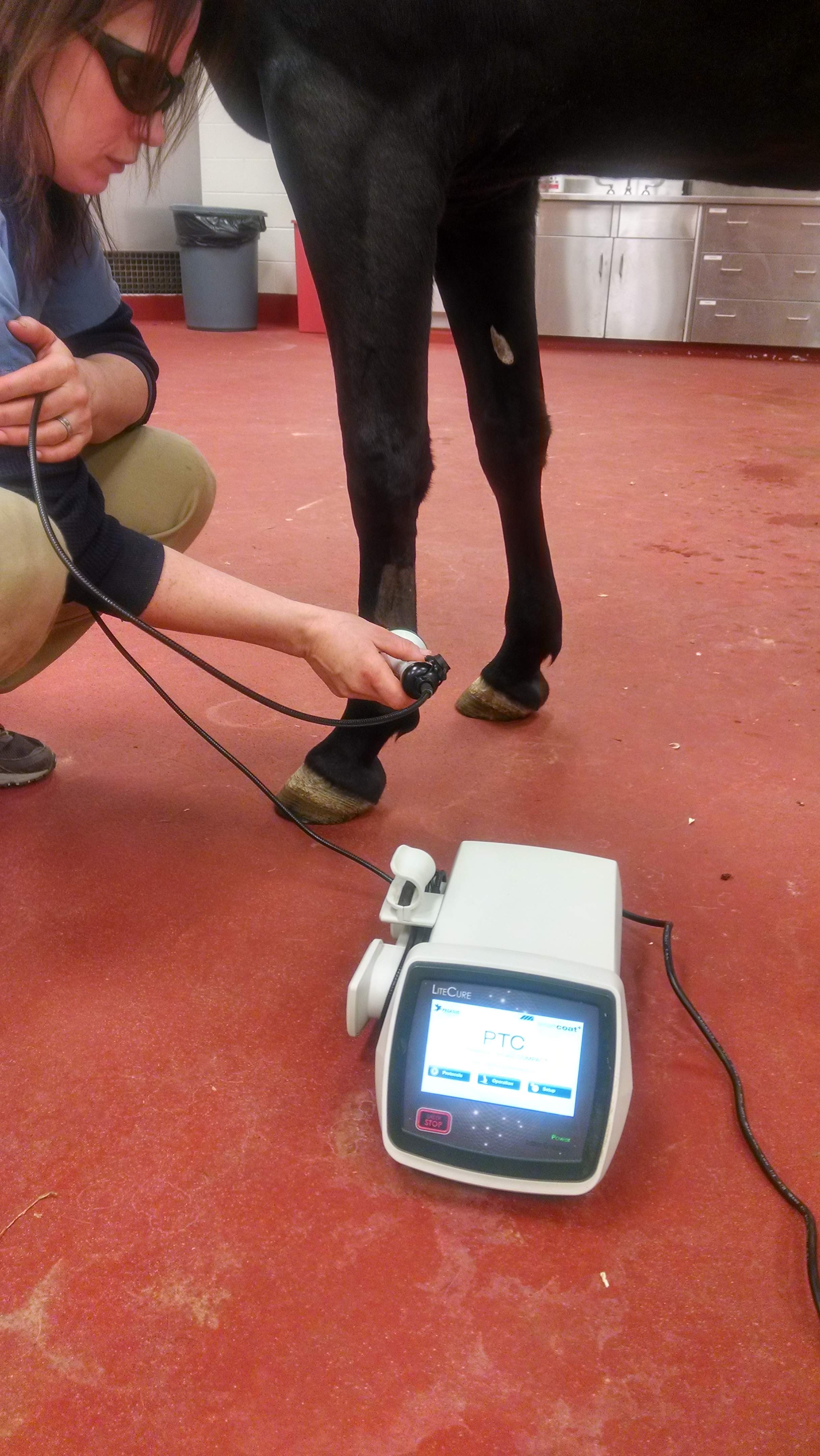Equine Therapy: How It Helps Build Confidence and Emotional Toughness
Equine Therapy: How It Helps Build Confidence and Emotional Toughness
Blog Article
Reviewing the Efficiency of Laser Treatment in Equine Treatment for Injury Rehabilitation
The evaluation of laser therapy's effectiveness in equine injury rehabilitation hinges on multiple factors, including recovery time, discomfort reduction, and cells regrowth. Veterinarians often observe remarkable results with laser therapy compared to conventional methods, positioning it as an important component in equine treatment.
Comprehending Laser Therapy
Laser therapy has become a crucial device in vet medicine, particularly in the therapy of equine conditions. Recognized for its non-invasive nature and efficiency, laser treatment includes the application of particular wavelengths of light to stimulate cells repair service and decrease inflammation. This healing technique is significantly preferred for its ability to accelerate the recovery process in horses enduring from a range of musculoskeletal injuries and persistent problems.
The main device behind laser therapy is its capacity to enhance mobile functions. When laser light passes through the skin, it is soaked up by mitochondria, the powerhouse of cells, which causes increased manufacturing of adenosine triphosphate (ATP) This biochemical power boost promotes cellular repair service and regeneration. Additionally, laser treatment advertises vasodilation, improving blood flow and oxygen distribution to damaged tissues, hence speeding up healing.
In equine medication, laser treatment is specifically advantageous for problems such as tendonitis, osteo arthritis, and injury recovery. The technique is lauded for its pain-relieving properties, allowing equines to reclaim mobility and feature extra swiftly. Vets also appreciate its minimal side impacts compared to other treatment techniques, making it a dependable and secure choice for equine treatment.

How Laser Therapy Functions

Upon absorption, these photons cause a collection of biochemical adjustments, enhancing mitochondrial feature and causing boosted adenosine triphosphate (ATP) production. This surge in ATP speeds up cellular metabolism, advertising tissue fixing and regrowth. Additionally, laser treatment modulates inflammatory feedbacks by influencing cytokine levels and reducing oxidative anxiety, thus reducing discomfort and swelling.
One more considerable aspect of laser therapy is its function in boosting microcirculation. The therapy promotes vasodilation, enhancing blood circulation and oxygen shipment to broken tissues (Equine Therapy). This promotes the removal of cellular particles and supports the spreading of visit site fibroblasts and collagen synthesis, important for injury healing
Professional Evidence
The efficiency of laser therapy in equine treatment has actually been validated via various professional research studies, showcasing its healing potential throughout a variety of conditions. Numerous controlled trials and empirical researches have recorded substantial improvements in tissue repair service, pain reduction, and total rehabilitation timelines. A study carried out by Turner et al. (2012) showed that steeds treated with low-level laser treatment (LLLT) for tendon injuries displayed increased recovery compared to those receiving traditional therapies. The research study highlighted a significant decrease in swelling and boosted collagen formation.
In a similar way, research study by Johnson and associates (2015) focused on equine muscular tissue injuries, revealing that laser treatment substantially expedited muscle fiber regeneration and reduced muscle mass stiffness. Clinical assessments have actually shown that laser treatment can reduce persistent conditions such as osteo arthritis.
Vet Insights

Veterinarians also appreciate the flexibility of laser therapy. It can be utilized for a broad variety of conditions, from shallow wounds to deeper musculoskeletal injuries. Dr. Emily Brown highlights its energy in dealing with problems like tendonitis and osteo arthritis, where standard treatments commonly fail. She mentions that laser therapy can be tailored to the certain needs of each horse, ensuring optimal outcomes.
Additionally, vets value the capability to incorporate laser treatment with various other therapy methods. This multimodal technique can boost total therapy efficiency, giving a detailed service for equine rehab. Such recommendations from skilled experts underscore the expanding acceptance and application of laser treatment in equine medication.
Practical Considerations
A vital element of implementing laser treatment in equine treatment entails understanding the practical factors to consider that ensure its efficiency and security. First and foremost, it is critical to select the appropriate laser tool, as various kinds differ in wavelength, power, and infiltration depth. Equine Therapy. Vets must be skilled in these criteria to tailor therapy protocols successfully to each injury type
Furthermore, the wikipedia reference frequency and period of laser therapy sessions need cautious planning to make best use of healing advantages while lessening any kind of possible unfavorable impacts. Regular monitoring of the steed's feedback to treatment can guide required changes in the therapy program. Developing a risk-free and controlled environment during treatments is likewise essential to stop unintended exposure to laser emissions, which might hurt both the equine and the trainer.
Educating and accreditation of personnel providing laser therapy are vital to make certain correct technique and to copyright safety standards. Furthermore, preserving precise records of each session, including laser settings and observed outcomes, is important for assessing the overall effectiveness of the treatment and for making data-driven decisions.
Conclusion
Laser therapy has actually emerged as a reliable method in equine injury recovery, using substantial advantages in healing time, discomfort relief, and cells Going Here healing. For optimal outcomes, continuous surveillance and individualized therapy protocols continue to be vital in leveraging the complete possibility of laser treatment in equine care.
Report this page